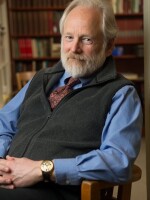I’ve been thinking a lot about “place” lately and what it means to be “placed”: not just to locate ourselves on specific coordinates of space and time, but to feel an organic connection to a particular piece of ground. It could be a stretch of river or a mountain trail, a small neighborhood on a dead-end road, a farm that’s been in a family for generations; it might be, as a newcomer observed, “a house – it’s not a home yet, but we’re working on it.”
“If you don’t know where you are, you don’t know who you are” said poet and essayist Wendell Berry. Profound, perhaps, but possibly, also, glib. It makes me want to dig deeper. Perhaps, depending on who you are, you’ll have different perceptions of where you are. And what you see may not only be less than what you get, but much less than what’s actually there.
For example, a man I know, a member of the Abenaki nation, walks my neighborhood and sees it as the first peoples saw it, finding evidence of their soft presence on the earth. My next-door neighbor, who’s lived on it and farmed it his entire life, walks it and recalls an entirely different history – rooted in family and in the yearly round of dairying, logging, sugaring, haying.
I, too, walk here and have my own understanding of this field or that wall or those hardwoods. I wonder, which of us is truly “placed”? We can walk the land, live on the land, own the land, even, but perhaps never know its truth.
The history of a place, like the history of a people, isn’t one account, but many narratives uniting to make one. Each of us contributes to weaving that tapestry – something that, as long as people live there, will never be complete. For the story of any piece of land is one of multiple embraces: each person living on it has changed it in some way – and been changed by it in return.
So as I look from my study window across the meadow and up the hill, I know I’m just the newest thread in a fabric woven by the collective experience of those who came before. Their lives are evident in the shape of field and forest, old walls and cellar holes and flowers that bloom in odd places, in how brooks run and where hills hold the snow longest. For those looking carefully, their stories wait in plain sight. And if we do look carefully we find our connection to the land extending beyond ourselves, including people we didn’t know but to whom we are nonetheless tightly bound.
Being placed, I’ve found, is not a private matter.




